The Science Behind THCA Flower Aroma: Terpenes and Cannabinoids
When you open a jar of premium THCA flower, that distinctive, complex aroma that fills the room isn't just a pleasant byproduct—it's the result of intricate chemical processes that have been millions of years in the making. The THCA flower aroma science behind these captivating scents involves a fascinating interplay between hundreds of chemical compounds, sophisticated plant biosynthesis, and environmental factors that work together to create the unique aromatic signatures we associate with different strains.
While many people associate cannabis aroma with cannabinoids like THCA or THC, these compounds are actually largely odorless. The real stars of the aromatic show are terpenes—volatile organic compounds that serve multiple functions in the plant's lifecycle and provide the distinctive pine, citrus, earthy, or floral notes that characterize different varieties. Cannabinoids play a supporting role, influencing the overall experience through what researchers call the entourage effect, but they're not the source of those powerful scents that define your favorite strains.
Understanding the chemistry of cannabis smell helps consumers make more informed decisions when selecting premium THCA flower. It explains why some flowers smell intensely fruity while others carry diesel or skunk notes, why storage conditions matter so much, and why genetics and growing conditions both play crucial roles in determining the final aromatic profile. This deep dive into plant chemistry will transform how you think about those fragrant buds, revealing the sophisticated biochemical machinery that creates the aromas we've come to love.
Plant Biochemistry Basics: A Chemical Symphony
Cannabis plants are remarkable chemical factories, producing more than 400 distinct chemical compounds during their lifecycle. This incredible diversity places cannabis among the most chemically complex plants known to science. These compounds fall into several categories: cannabinoids (like THCA, THC, CBD, CBG, and CBN), terpenes and terpenoids (the aromatic compounds), flavonoids (which contribute to color and minor taste elements), and various other organic compounds that support plant function.
The aromatic compounds that create the scientific explanation of cannabis smell are primarily produced in specialized structures called trichomes—tiny, mushroom-shaped glands that develop on the surface of cannabis flowers, leaves, and stems. These microscopic factories are where the magic happens. While the entire plant performs photosynthesis and general metabolic functions, trichomes are specialized production centers for essential oils and aromatic compounds.
Cannabinoids are also synthesized primarily in trichomes, specifically in the heads of capitate-stalked trichomes. The plant produces these compounds through a complex biosynthetic pathway that starts with precursor molecules and involves numerous enzyme-catalyzed reactions. Both terpenes and cannabinoids develop progressively during the plant's growth cycle, with production typically peaking during the flowering stage when the plant is preparing for reproduction.
The concentration and profile of these compounds change dramatically throughout the plant's development. Young plants produce relatively few aromatic compounds compared to mature flowering plants. As the plant enters its flowering phase, trichome production accelerates, and both terpene and cannabinoid synthesis increase substantially. This is why timing the harvest correctly is so crucial—harvesting too early means missing peak terpene and cannabinoid production, while harvesting too late can result in degraded compounds.
Environmental conditions throughout the growth cycle influence which compounds are produced and in what quantities. Light exposure, temperature, humidity, nutrient availability, and even stress factors all send signals to the plant's genetic machinery, activating or suppressing certain biosynthetic pathways. This is why the same strain grown in different conditions can have noticeably different aromatic profiles, even though the underlying genetics remain identical.
Terpene Biosynthesis: Nature's Aromatic Architecture
To understand terpene biosynthesis, we need to explore one of nature's most elegant chemical systems. Terpenes are built from a simple five-carbon building block called isoprene (C₅H₈). Through a process called the isoprenoid biosynthetic pathway, plants link these isoprene units together in various configurations to create the diverse array of terpenes found in cannabis and other aromatic plants.
The biosynthesis occurs through two distinct pathways in plants: the mevalonic acid (MVA) pathway and the methylerythritol phosphate (MEP) pathway. Both pathways produce isopentenyl diphosphate (IPP) and dimethylallyl diphosphate (DMAPP), which are the activated forms of isoprene units. These precursor molecules then undergo various condensation reactions to form larger terpene structures.
Monoterpenes, which contain two isoprene units (C₁₀), include many of the dominant aromas in cannabis—limonene (citrus), pinene (pine), and myrcene (earthy, musky). Sesquiterpenes, containing three isoprene units (C₁₅), include compounds like caryophyllene (spicy, peppery) and humulene (woody, earthy). The way these isoprene units are assembled and subsequently modified creates the incredible diversity of aromatic molecules.
The key to this diversity lies in specialized enzymes called terpene synthases. Cannabis plants possess dozens of different terpene synthase genes, each encoding an enzyme that catalyzes the formation of specific terpene structures. These enzymes work like molecular architects, taking the basic isoprene building blocks and folding them into precise three-dimensional structures that determine the final molecule's properties and aroma.
Genetic control of terpene production is sophisticated and multilayered. The plant's DNA contains the blueprints for all possible terpene synthase enzymes, but which genes are expressed (turned on) and how much enzyme is produced depends on developmental signals, environmental conditions, and regulatory networks within the plant. This is why does cannabis have terpenes—they evolved as defensive compounds that protect the plant from herbivores, pests, and pathogens, while also potentially attracting beneficial insects for pollination.
Environmental factors significantly influence terpene production. Ultraviolet (UV) light exposure increases terpene synthesis, which is why outdoor-grown cannabis often has robust aromatic profiles. Temperature affects both production rates and retention—higher temperatures can boost synthesis but also increase evaporation of volatile terpenes. Plants experiencing moderate stress (like slight nutrient deficiency or water stress) often produce more terpenes as a defensive response, though excessive stress can harm overall plant health and reduce quality.
Cannabis is considered "terpene-rich" compared to many other plants because its evolutionary path selected for high terpene production as a survival strategy. The sticky, aromatic trichomes deterred many herbivores and pests while the antimicrobial properties of certain terpenes protected the plant from pathogens. Modern cultivation has maintained and even enhanced these traits because humans value the aromatic and potentially therapeutic properties of these compounds.
The Trichome Connection: Microscopic Aromatic Factories
Trichomes are the structural foundation of cannabis terpene science, serving as both the production facility and storage containers for aromatic compounds. These microscopic structures cover the surface of cannabis flowers, appearing as a frosty, crystalline coating visible to the naked eye on high-quality THCA hemp flower.
Cannabis produces several types of trichomes, broadly classified as glandular and non-glandular. Non-glandular trichomes are simple hair-like structures that provide physical protection but don't produce significant aromatic compounds. Glandular trichomes, on the other hand, are the chemical powerhouses we're interested in. These include bulbous trichomes (smallest and least abundant), capitate-sessile trichomes (medium-sized), and capitate-stalked trichomes (largest and most abundant on mature flowers).
Capitate-stalked trichomes are the main producers of terpenes and cannabinoids. These structures consist of a stalk topped with a bulbous head containing specialized secretory cells. Inside this head, biosynthetic machinery works continuously during the flowering phase to produce aromatic compounds. The head also contains a storage cavity where terpenes and cannabinoids accumulate in a resinous mixture.
The secretory cells within trichome heads contain high concentrations of the enzymes responsible for terpene and cannabinoid biosynthesis. These cells are metabolically active during the flowering phase, drawing on precursor molecules transported from other parts of the plant and converting them into the final aromatic and cannabinoid compounds. The resin that accumulates in the storage cavity is a complex mixture of terpenes, cannabinoids, and other compounds suspended in lipids.
This storage mechanism explains why breaking or grinding cannabis flower releases such an intense burst of aroma. The trichome heads are relatively fragile structures, and physical disruption ruptures the storage cavities, releasing the volatile terpenes into the air. This is also why rough handling or excessive processing can reduce aromatic quality—damaged trichomes lose their precious volatile compounds to evaporation.
Visual indicators of high terpene content include dense trichome coverage that gives flowers a frosted or sugary appearance, prominent amber or milky-colored trichome heads (indicating maturity and full development), and sticky texture when handling flowers. However, trichome density doesn't always correlate perfectly with specific terpene concentrations, which is why laboratory testing remains the gold standard for determining precise terpene profiles.
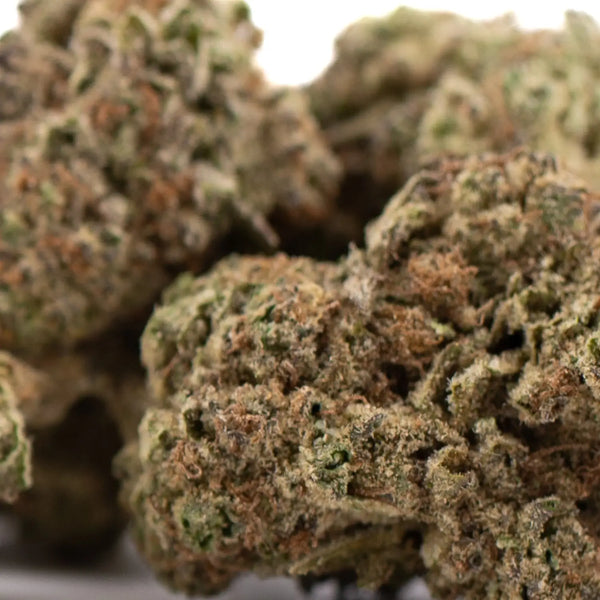
Cannabinoid Chemistry and Smell: The Odorless Majority
Understanding cannabinoid aroma requires recognizing a counterintuitive fact: cannabinoids themselves contribute very little to cannabis aroma. The molecular structures of THCA, THC, CBD, CBG, CBN, and other cannabinoids lack the volatile characteristics that create strong scents. These are relatively large, complex molecules with chemical properties that make them stable and non-volatile at room temperature.
THCA (tetrahydrocannabinolic acid) has a molecular formula of C₂₂H₃₀O₄ and exists as a carboxylic acid. Its structure includes a resorcinol core with a pentyl side chain and a monoterpene group, but these structural elements don't produce significant aroma. The molecule is too large and its functional groups are too strongly bonded to readily evaporate and trigger olfactory receptors.
THC (tetrahydrocannabinol), which forms when THCA undergoes decarboxylation (loss of the carboxylic acid group through heat), has a molecular formula of C₂₁H₃₀O₂. This structural change—removal of a single carboxyl group (CO₂)—slightly reduces molecular weight but doesn't create aromatic properties. The molecule remains non-volatile and essentially odorless.
Similarly, CBD (cannabidiol), CBG (cannabigerol), and CBN (cannabinol) all have complex molecular structures that don't readily produce aromas. These cannabinoids exist as oils at room temperature, with high boiling points and low vapor pressures—the opposite characteristics of volatile aromatic compounds like terpenes, which have low boiling points and high vapor pressures.
The decarboxylation process—converting THCA to THC through heat—doesn't create smell either. When cannabis is heated (through smoking, vaping, or cooking), the aromatic compounds released come primarily from vaporized terpenes, not from the cannabinoid conversion process itself. Raw cannabis flower and decarboxylated flower have very similar base aromas; the difference in smell when consuming cannabis comes from terpenes being volatilized at various temperatures, not from cannabinoid chemistry.
This is why extracted cannabinoid isolates (pure THCA or THC crystals, for example) have minimal aroma. Without the accompanying terpenes, these concentrates lack the distinctive scents associated with cannabis. The pungent, varied aromas we associate with different strains come entirely from the terpene profile, while cannabinoids provide the effects without contributing to the aromatic experience.
The Entourage Effect Theory: Synergistic Chemistry
The entourage effect is one of the most intriguing concepts in cannabis terpene science, proposing that cannabinoids and terpenes work together synergistically to produce effects that are different from—and potentially greater than—the sum of individual compounds. While terpenes create aroma and cannabinoids provide their own distinct interactions with human physiology, the theory suggests that these compounds may modulate and enhance each other's properties.
The hypothesis emerged from observations that whole-plant cannabis extracts often produce different experiences compared to isolated cannabinoids at equivalent doses. Researchers proposed that terpenes might influence how cannabinoids interact with receptors, affect their absorption, or modify their metabolism. Some terpenes might enhance certain properties while dampening others, creating the distinctive character associated with different strains beyond just their cannabinoid content.
How terpenes work in this context is still being investigated. Some terpenes can cross the blood-brain barrier and may interact with neurotransmitter systems. Certain terpenes have demonstrated their own biological activities in laboratory studies—myrcene has shown sedative properties, limonene has demonstrated mood-elevating effects, and pinene may support alertness. When combined with cannabinoids, these terpene effects could potentially layer with cannabinoid effects to create more complex outcomes.
The research status of the entourage effect remains theoretical but promising. While plenty of anecdotal reports support synergistic effects, rigorous clinical studies systematically comparing isolated compounds versus whole-plant extracts are limited. The challenge lies in the complexity—with hundreds of compounds present in varying ratios across different strains, controlled studies become extremely difficult to design and execute.
This is why whole-flower products matter to consumers seeking the full THCA flower aroma science experience. When you choose full-spectrum THCA flower rather than isolates or heavily processed concentrates, you're getting the complete chemical profile that nature designed—all the cannabinoids, terpenes, and minor compounds working together. While isolates offer purity and precise dosing of individual compounds, they sacrifice the potential synergies that make each strain unique.
The difference between isolates and full-spectrum products extends beyond potential effects to the sensory experience itself. The aromatic journey of grinding fresh flower, the flavor profile when consumed, and the overall character of the experience all depend on having a rich terpene profile alongside cannabinoids. This is why connoisseurs often prefer flower over isolates—not just for potential entourage effects, but for the complete sensory experience that makes cannabis consumption pleasurable and distinctive.
Genetics and Chemotypes: The Blueprint for Aroma
The foundation of every strain's aromatic profile is written in its cannabis genetics. The DNA of a cannabis plant contains all the instructions for which terpene synthase enzymes can be produced, which cannabinoid biosynthesis pathways are active, and what ratios of compounds will be synthesized under ideal conditions. Understanding strain chemistry means understanding how genetic blueprints translate into the aromatic bouquets we experience.
Each cannabis variety (strain) has a specific genotype—its complete genetic code. Within that genotype are genes encoding dozens of potential terpene synthases, each capable of producing different terpene molecules. The plant's genetics determine which terpene synthase genes are present and which ones are expressed most strongly. Some strains have genetic variants that cause certain enzymes to be produced in high quantities, leading to dominant terpenes that define the strain's characteristic aroma.
However, genetics is only half the story. Phenotype expression—how those genes are actually translated into observable characteristics—varies based on environmental conditions and even random developmental variation. This is why the same strain grown by different cultivators, or even different plants from the same seed batch, can show slight variations in aromatic profile. The underlying genetics remains consistent, but the expression of those genes fluctuates.
Dominant versus recessive traits play a role in breeding and genetic variation. Some terpene-producing genes are dominant, meaning their effects are strongly expressed even if only one copy is present. Others are recessive, requiring two copies to be expressed. When breeders cross different strains, they're essentially shuffling these genetic variants, hoping to combine desirable traits from both parents into offspring with improved aromatic profiles or enhanced characteristics.
Modern cannabis breeding specifically targets terpene profiles alongside cannabinoid content. Breeders might select for high myrcene content to create more sedative strains, or breed for high limonene to achieve uplifting citrus aromas. Through selective breeding across multiple generations, breeders can enhance specific terpenes or create new combinations that didn't exist in the parent strains. This is how the incredible diversity of modern cannabis aromas emerged from a relatively limited number of landrace varieties.
The concept of chemotypes helps classify cannabis varieties based on their chemical profiles. While traditional classification relied on physical characteristics (indica vs sativa), modern understanding recognizes that chemical composition is more meaningful. Chemotypes might be classified by dominant cannabinoid (THCA-dominant, CBD-dominant, balanced) or by terpene profile (myrcene-dominant, pinene-dominant, etc.). This classification is more useful for predicting aroma and potential effects than older physical classification systems.
Understanding genetics also explains why the same strain name can vary between sources. Without standardized genetic testing and breeding programs, strain names often represent general characteristics rather than genetically identical plants. One producer's "Blue Dream" might have a different terpene profile than another's, even though both share some genetic heritage. This is why purchasing from reputable sources that provide laboratory testing and consistent genetics matters—you're getting reliable, reproducible aromatic profiles rather than approximate representations.
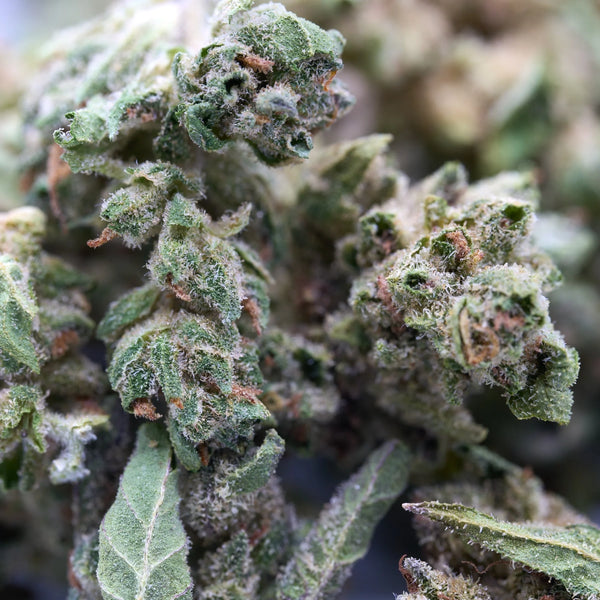
Environmental Influence on Aroma: Growing Conditions Matter
Even with perfect genetics, the final aromatic profile of THCA flower depends heavily on environmental factors during cultivation. Growing conditions act as signals that tell the plant's genetic machinery how to respond, influencing which genes are expressed, how strongly enzymes are produced, and ultimately determining the concentration and ratio of terpenes in the final product.
Light spectrum dramatically affects terpene production. Ultraviolet (UV) light, particularly UV-B wavelengths, increases terpene synthesis as a protective response—terpenes act as natural sunscreen, protecting plant tissues from UV damage. This is why outdoor cannabis grown at high elevations (where UV exposure is intense) often develops robust terpene profiles. Indoor growers can replicate this effect by incorporating UV supplementation during the flowering phase, though this must be balanced against potential stress to the plant.
Full-spectrum lighting that includes blue wavelengths promotes compact, healthy growth and appears to support terpene production through various photomorphogenic responses. Red wavelengths drive flowering and cannabinoid production. Modern LED technology allows growers to fine-tune light spectrums for optimal terpene development, though natural sunlight remains the gold standard for achieving complex aromatic profiles.
Temperature significantly influences both production and retention of volatile terpenes. During growth, moderate temperatures in the 70-80°F range typically support optimal terpene synthesis. Higher temperatures can increase biosynthetic activity but also accelerate terpene evaporation, resulting in net loss. Cooler temperatures during late flowering can help preserve volatile terpenes by reducing evaporation rates, which is why some growers implement temperature drops during the final weeks of flowering.
Temperature swings between day and night cycles can also influence terpene production. Some growers believe that moderate day-night temperature differentials trigger stress responses that boost terpene synthesis. However, excessive temperature stress can harm the plant and reduce overall quality, so finding the right balance is crucial.
Humidity affects terpene development through multiple pathways. Moderate humidity levels (40-50% during flowering) help maintain plant health and support metabolic functions necessary for terpene synthesis. Very low humidity can stress plants and potentially trigger increased terpene production as a defensive response, but also increases evaporation of volatile compounds. High humidity during flowering poses risks of mold and bud rot, which can devastate crops before harvest.
Nutrients provide the building blocks for terpene biosynthesis. Nitrogen, phosphorus, and potassium are essential macronutrients, but secondary nutrients and micronutrients also play crucial roles. Sulfur, for instance, is incorporated into some terpene structures and is essential for certain terpene synthase enzymes to function. Micronutrients like zinc, iron, and manganese serve as cofactors for various enzymes in the biosynthetic pathways.
However, nutrient excess can be as problematic as deficiency. Excessive nitrogen during flowering can delay maturation and dilute terpene concentrations. Balanced nutrition that matches the plant's developmental stage is key—heavier nitrogen during vegetative growth, then transitioning to lower nitrogen and higher phosphorus/potassium during flowering to support terpene and cannabinoid production.
Stress factors can increase terpene production, though this is a double-edged sword. Moderate stress from factors like slight water deficit, minor physical stress (stem manipulation), or controlled pest pressure may trigger defensive responses that boost terpene synthesis. Plants evolved to produce more defensive compounds when threatened. However, severe stress diverts energy away from compound production toward survival, reducing both yield and quality.
The concept of terroir—borrowed from wine production—applies to cannabis cultivation. Just as wine grapes express different characteristics based on where they're grown, cannabis develops unique aromatic signatures based on the combination of soil composition, climate, altitude, and local environmental factors. Two plants from identical genetics can develop distinctly different terpene profiles when grown in different environments, which is why location and growing technique matter alongside genetics.
Post-Harvest Chemistry: Evolution After the Cut
The chemistry of cannabis smell doesn't stop at harvest—in fact, some of the most critical chemical changes occur during drying, curing, and storage. Understanding post-harvest chemistry helps explain why properly processed flower has superior aroma compared to poorly handled product, and why storage conditions can make or break aromatic quality over time.
The drying phase initiates immediate changes in the flower's chemistry. As moisture evaporates from plant tissues, metabolic processes gradually shut down, but enzymatic activity continues for days or even weeks. During this phase, chlorophyll begins to break down, reducing the fresh "green" smell that newly harvested plants exhibit. Simultaneously, some terpenes begin evaporating—particularly the most volatile, low-boiling-point terpenes.
The rate of drying significantly impacts terpene retention. Slow, controlled drying (55-65°F, 55-65% humidity, taking 7-14 days) minimizes terpene loss by reducing evaporation rates and allowing enzymatic processes to proceed naturally. Rapid drying (high temperature, low humidity, just a few days) often results in harsh, grassy-smelling flower because chlorophyll doesn't break down properly and volatile terpenes flash off quickly. Conversely, drying too slowly (excessive humidity) invites mold growth, which destroys both aromatic quality and product safety.
Curing is where the real magic happens for aromatic development. During the curing phase, flowers are stored in sealed containers at controlled humidity (58-62%) for weeks to months. This allows enzymatic reactions to continue breaking down chlorophyll and other plant compounds while minimizing terpene loss. The breakdown of chlorophyll reveals the underlying aromatic terpenes more clearly, which is why cured flower smells cleaner and more defined than freshly dried product.
The curing process also allows for some chemical transformations of terpenes themselves. Some terpenes can oxidize into related compounds or rearrange into different molecular configurations. While this might sound like degradation, these transformations can actually enhance aromatic complexity, creating subtler, more nuanced scent profiles. Well-cured flower often develops deeper, richer aromas compared to the same flower immediately after drying.
Different terpenes have different evaporation rates based on their molecular weights and boiling points. Monoterpenes like myrcene, limonene, and pinene are relatively volatile and begin evaporating early in the drying process and continue throughout storage. Sesquiterpenes like caryophyllene and humulene are less volatile and persist longer. This is why the aromatic profile of flower can shift over time—the lighter, brighter notes (citrus, pine) may fade first, while deeper, earthier notes become more prominent.
Oxidation processes continue slowly during storage, especially if flower is exposed to oxygen, light, or heat. Terpenes can oxidize into different compounds, some of which have different aromas. Cannabinoids also oxidize—THCA and THC can convert to CBN (cannabinol), which has minimal aroma but represents degradation of active compounds. This is why proper storage in airtight, light-proof, cool containers is essential for maintaining aromatic quality.
Storage chemistry explains why the smell of premium THCA flower evolves over time. Fresh flower might burst with bright, vibrant terpene notes. After several months of proper storage, the aroma might become mellower and more complex, with some of the volatile high notes replaced by deeper aromatic notes. After a year or more, even properly stored flower typically shows reduced aromatic intensity as volatile terpenes gradually escape or transform.
Temperature is the most critical storage variable. Cool temperatures (55-70°F) dramatically slow both evaporation and oxidation reactions. Some connoisseurs store flower in refrigerators or even freezers for long-term preservation, though care must be taken to prevent moisture condensation when removing cold flower into warmer air. Heat accelerates all degradation processes—flower stored in hot conditions can lose significant aromatic quality in just weeks.
Humidity control during storage matters too. Very dry conditions make trichomes brittle and increase evaporation of volatile compounds. Excessive humidity invites mold growth. The sweet spot of 58-62% relative humidity—often maintained with specialized humidity control packets—preserves trichome integrity while preventing microbial growth.
Frequently Asked Questions
Are terpenes unique to cannabis?
No, terpenes are produced by thousands of plant species and even some insects. They're the primary components of essential oils and are responsible for most plant aromas—pine trees (pinene), citrus fruits (limonene), lavender (linalool), black pepper (caryophyllene), and hops (myrcene, humulene). Cannabis is notable for producing unusually high concentrations and diverse profiles of terpenes, but the individual terpene molecules themselves are found throughout nature. When you smell cannabis and recognize notes of lemon, pine, or pepper, you're detecting the same terpenes found in those other sources.
Do cannabinoids have any smell?
Cannabinoids like THCA, THC, CBD, and CBG have minimal to no aroma. These molecules are relatively large, non-volatile compounds that don't readily evaporate at room temperature to trigger olfactory receptors. The distinctive cannabis smell comes entirely from terpenes and other aromatic compounds. Pure cannabinoid isolates (like THCA diamonds or CBD crystals) have almost no scent. The association between cannabis effects and cannabis smell exists because cannabinoids and terpenes are produced together in trichomes, but the compounds serving different functions—cannabinoids for biological effects, terpenes for aroma and potential synergistic properties.
Can you create terpenes artificially?
Yes, many terpenes can be synthesized in laboratories or extracted from non-cannabis sources and then added to products. These are called "botanical terpenes" when extracted from other plants or "synthetic terpenes" when created through chemical synthesis. While chemically identical to cannabis-derived terpenes, artificially added terpenes may lack the subtle complexity of natural terpene profiles. Cannabis produces terpenes in specific ratios alongside dozens of minor aromatic compounds that contribute to the overall aromatic complexity. Products with added terpenes often smell similar but not identical to natural cannabis, and they definitely lack the full spectrum of compounds that might contribute to entourage effects.
Why do some plants produce more terpenes than others?
Terpene production varies based on three main factors: genetics, growing conditions, and plant health. Genetically, some strains are programmed to produce higher concentrations of terpene synthase enzymes or have more trichome density. Environmental conditions—particularly light spectrum, UV exposure, temperature, and moderate stress—can trigger increased terpene production. Healthy plants with optimal nutrition and no disease stress can dedicate more resources to secondary metabolite production, including terpenes. Finally, harvest timing matters—plants harvested at peak maturity (when trichomes are mostly cloudy with some amber) typically have maximum terpene concentrations, while early or late harvests may have reduced aromatic intensity.
Do terpenes degrade into other compounds?
Yes, terpenes can undergo various chemical transformations through oxidation, isomerization, and other reactions. When exposed to oxygen, light, heat, or moisture, terpenes can oxidize into different compounds—some of which have different aromas or no aroma at all. Some terpenes can also isomerize (rearrange their molecular structure without changing their molecular formula), creating related compounds with different properties. This is part of why cannabis aroma evolves during curing and storage. While some transformations enhance aromatic complexity, extensive degradation eventually reduces overall aromatic quality. Proper storage in cool, dark, airtight conditions minimizes unwanted degradation while allowing beneficial curing reactions to occur.
Conclusion: Appreciating the Aromatic Symphony
The THCA flower aroma science reveals that those captivating scents you experience when opening a jar of premium flower result from millions of years of plant evolution, sophisticated biochemical pathways, careful cultivation, and proper post-harvest processing. The complex interplay between genetics and environment determines which terpenes are produced and in what ratios, while the plant's biosynthetic machinery constructs these aromatic molecules from simple building blocks through elegant enzymatic processes.
Understanding this chemistry transforms how we appreciate quality cannabis. Those glistening trichomes aren't just beautiful—they're microscopic factories producing hundreds of compounds through precisely orchestrated biochemical reactions. The variation in aromas between strains isn't random but reflects different genetic programs expressed through environmental conditions. The importance of proper curing, storage, and handling becomes clear when you understand how easily volatile terpenes can be lost through improper technique.
Both genetics and environment play crucial roles in creating exceptional aromatic profiles. A strain with the best genetics won't express its full potential without optimal growing conditions, and perfect growing conditions can't overcome poor genetics. This is why the source of your THCA hemp flower matters—quality starts with superior genetics and is maintained through every step of cultivation, harvest, processing, and storage.
For consumers seeking the fullest aromatic experience and potential benefits from the entourage effect, choosing whole-flower products from reputable sources with transparent laboratory testing ensures you're getting the complete chemical profile that nature designed. Understanding the science behind these aromas helps you make informed decisions, appreciate the craft behind premium cultivation, and recognize quality when you experience it.
The next time you experience that rush of distinctive aroma from fresh flower, you'll know you're experiencing the end result of complex plant biochemistry, careful cultivation, and the sophisticated chemistry that makes cannabis one of nature's most fascinating aromatic plants.

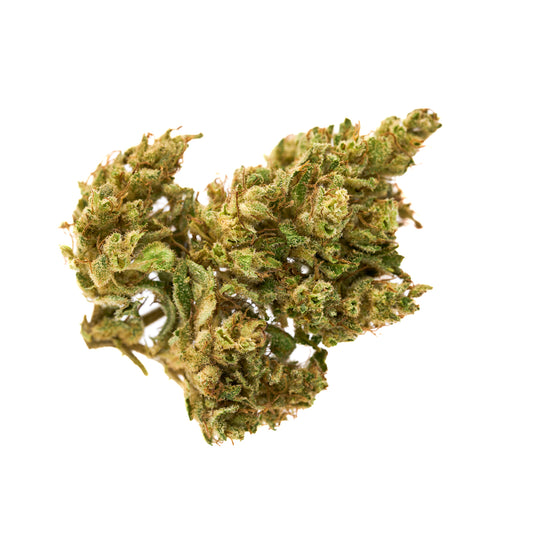
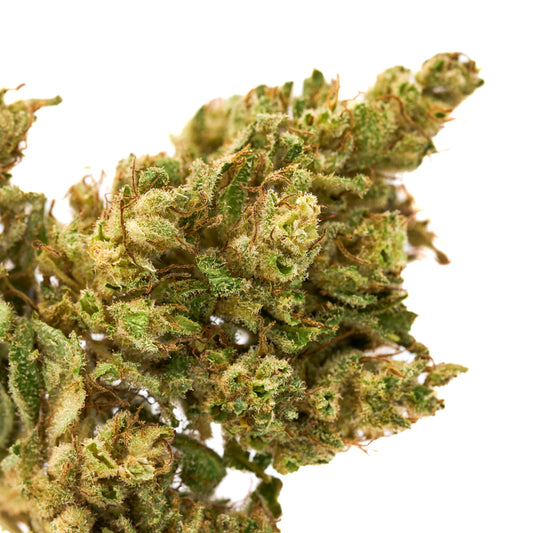
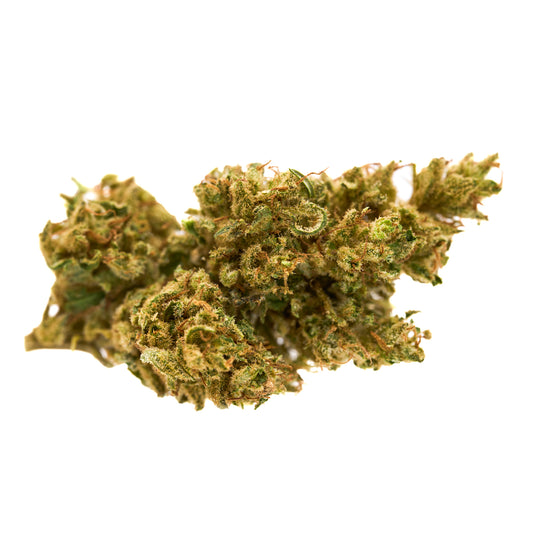

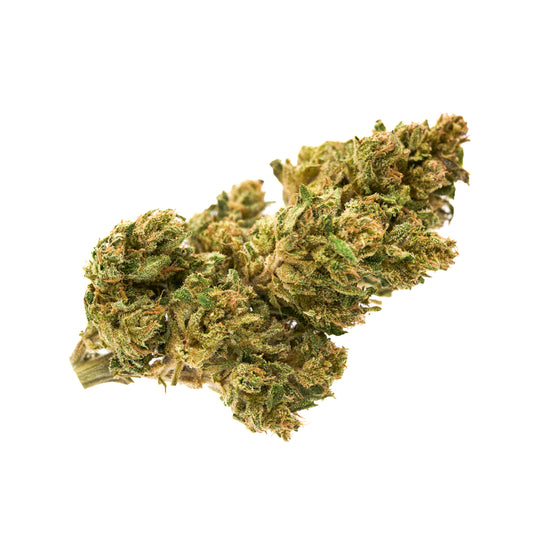




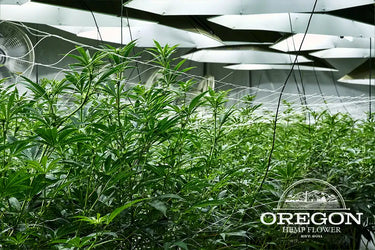

Leave a comment
Please note, comments need to be approved before they are published.